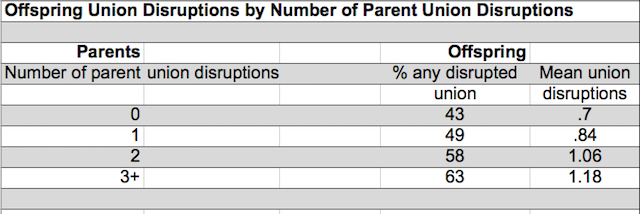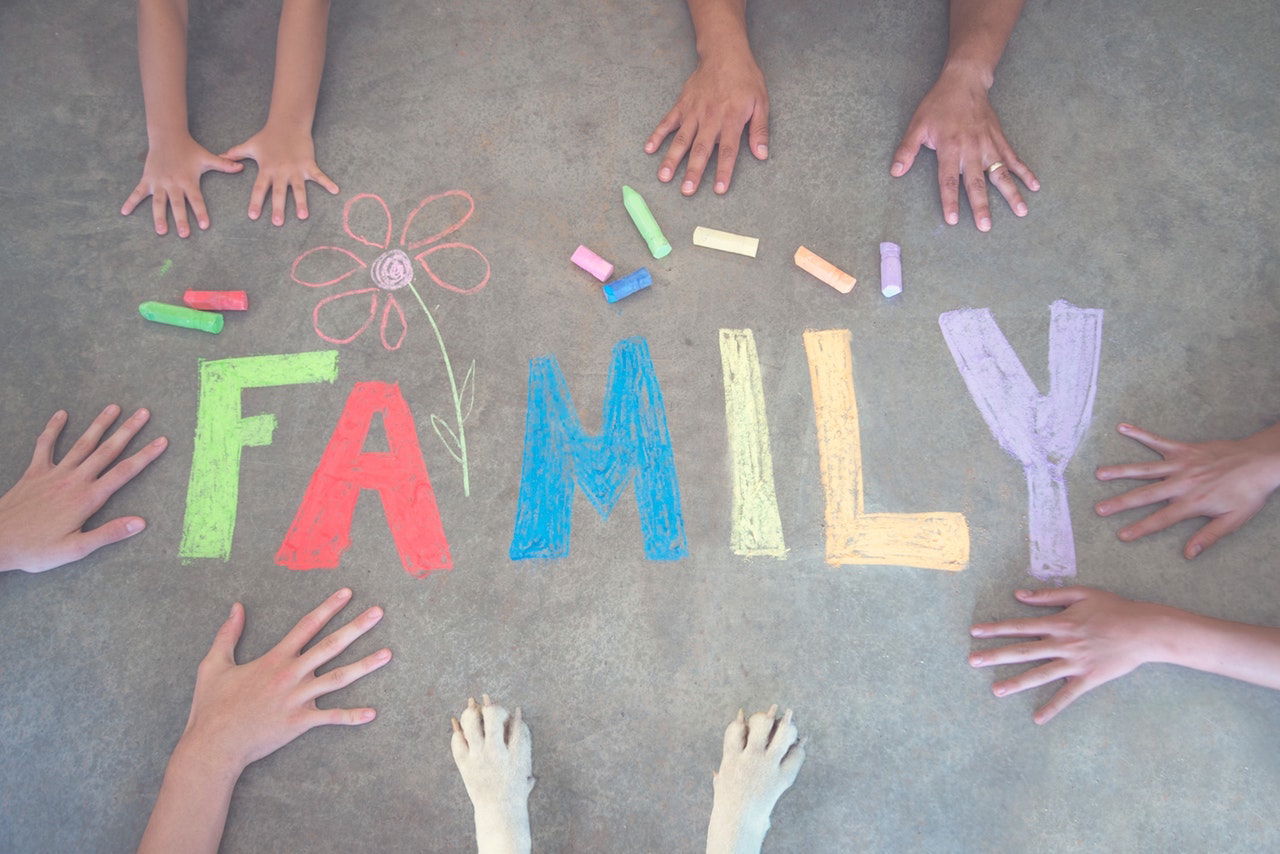Highlights
Pennsylvania State University sociologist Paul Amato has had a vital impact on my own research. I spent the first decade of my career studying the divorce cycle, the tendency for divorce to run in families. This work culminated in my 2005 book, Understanding the Divorce Cycle: The Children of Divorce in Their Own Marriages.
When I began my research, Paul was already an established expert on the consequences of growing up with divorced parents. He started writing about the intergenerational transmission of divorce around the same time I did and published numerous articles about it in peer-reviewed journals. His two most important papers (here and here) greatly deepened our understanding of why growing up in a divorced family has such a profound effect on offspring marital behavior. Both were discussed at length in my book.
Given our shared research interest, I was pleased to see that Paul has resumed his study of the intergenerational transmission of divorce (not to mention surprised, as Paul has been officially retired for several years now) in an article recently published in Journal of Marriage and Family. Paul and his coauthor Sarah E. Patterson, a graduate student at Penn State, replicate and update work on the divorce cycle that I originally published in a 2000 article published in Journal of Family Issues. Paul’s new work combines one well-established insight from the divorce literature with an understudied but vitally important measure of how the adult offspring of divorced parents typically behave in their own romantic relationships.
The established insight is that every family structure transition a child experiences in his or her family of origin cumulatively increases the likelihood of negative outcomes for that child. Parental divorce is one transition, while remarriage is another. If that remarriage doesn’t work out, a child will have experienced three family structure transitions. My work has shown this, though the best-known demonstration of this principle is probably a 1993 article by NYU sociologist Lawrence Wu. Both Wu’s work and my own establish that simply counting the number of family structure transitions that a child experiences is the best empirical means of assessing how family structure of origin will ultimately affect offspring behavior.
At this juncture, I have a quibble with how Paul designed his new study. He chose to count bereavement as a family structure transition, while my work ignored parental death. Why did I exclude it? There are numerous studies showing that compared to divorce, death has minimal consequences for offspring marital behavior. Paul and his co-author cite a single study in support of this decision, but a preponderance of studies—all reviewed in my 2005 book—support my decision. And my own analyses of two different national data sets showed that bereavement doesn’t really make a difference when the affected children become marriageable adults themselves. Ultimately this isn’t a big deal, given that relatively few modern marriage-age adults experience the death of a parent while growing up.
With all of that in mind, what’s the important but understudied dimension of relationship behavior that Paul and his co-author measure? Aside from my 2000 Journal of Family Issues paper, their new research is the only study on the divorce cycle that I know of that looks at relationship trajectories, not just first marriages. In other words, this new study is concerned with whether the adult children of divorce have distinctive patterns of behavior in romantic relationships. To this end, they count the number of unions, marital or live-in, that end in disruption (they share my regret of not being able to look at dating, as these relationships are too hard to measure accurately).
Their findings are consistent with mine. I said it best in a 2009 interview with NPR: "If you experience relationships as transitory while growing up, that's what you'll do as an adult.” Using fairly recent data, Paul finds that each parental breakup experienced while growing up increases the odds of dissolving a relationship by 16 percent. This finding is adjusted for numerous potentially confounding factors such as age at marriage, religiosity, education, and various parental attributes. As the table below shows, any experience with changes in childhood family structure increases both the overall chances of dissolving a relationship and the number of relationships one is likely to terminate.

Note: Sample size is 6,784. Data are from the National Longitudinal Study of Adolescent to Adult Health and are weighted to be nationally representative. Source: Amato, Paul R. & Sarah E. Patterson, “The Intergenerational Transmission of Union Instability in Early Adulthood,” Journal of Marriage and Family, Forthcoming.
The importance of this finding is its applicability to offspring marriages and cohabiting unions alike. The lion’s share of studies on the divorce cycle have only looked at marriage, even though this new study shows that 79 percent of dissolved offspring relationships were live-in partnerships, not marriages. This proves my point: it’s important to look at all relationships, not just marriages. Earlier studies were often constrained by data limitations, but that’s no longer a valid excuse.
All the same, it’s important to recognize the differences between marriage and cohabiting relationships. As Brad Wilcox and I make clear in our recent book, Soul Mates: Religion, Sex, Love, and Marriage Among African Americans and Latinos, the differences are vast. Most cohabiting unions don’t last. A couple either ties the knot or calls it quits, and fairly quickly most of the time. Cohabiting couples also tend to be less happy in their relationships. Obviously, this isn’t true of all cohabiting unions—some cohabiters are just as happy as their married peers, and will stay together for decades. But these folks are the exception rather than the norm, as our study and many others have shown. The demographics of cohabitation are also different. Younger adults, less religious adults, and people with less education are more likely to be cohabiting rather than married. Finally, cohabitation is especially common among people from divorced families, and adults who’ve already been married themselves.
Paul and his co-author are right to observe that the same factors predict cohabitation and divorce. However, that is an apples-and-oranges comparison: cohabitation is a state, while divorce is a transition out of a state. The better comparison is divorce and cohabitation dissolution, and here the evidence is more mixed. It’s much easier to predict divorce than whether a cohabiting union breaks up. As I suggest in Understanding the Divorce Cycle, most of the strongest predictors of divorce aren’t helpful in predicting cohabitation dissolution.
All of these facts suggest that Paul should have examined divorce and cohabitation dissolution both together and separately to answer the question: do family structure transitions affect marital and cohabiting stability equally? My own research found large effects on marital stability, but minimal consequences for cohabitation dissolution.
Another result from Paul’s recent research seems at odds with his earlier work. The recent work shows that growing up in a stable but unhappy family increased the odds of family structure transitions by 22 percent. However, Paul’s 2001 article with Danelle DeBoer showed that disputatious intact families yielded markedly lower rates of offspring divorce. In essence, children were being taught to withstand an acrimonious marriage—and that’s a big reason why the children of divorce are disproportionately likely to end their own marriages (they haven’t fully learned to stick with a spouse when the going gets tough.) It’s hard to know why Paul’s recent findings differ from what he concluded 15 years ago, so this may be a fruitful avenue of analysis for future scholarship.
Paul Amato has now produced quality research about the consequences of nonintact parenting for three decades. His most recent article is fresh evidence for an age-old proposition: many of us will end up just like our parents. At the same time, it’s essential to point out that family of origin isn’t destiny. According to Paul’s data, almost half (43 percent) of adults from two-parent homes will themselves dissolve a marriage or cohabiting relationship, while over a third (37 percent) of people who experienced multiple family structure transitions while growing up will not report any break-ups themselves. Family structure of origin is just one of many factors that determine how we fare in our relationships.
Nicholas H. Wolfinger is Professor of Family and Consumer Studies and Adjunct Professor of Sociology at the University of Utah. His most recent book is Soul Mates: Religion, Sex, Love, and Marriage among African Americans and Latinos, coauthored with W. Bradford Wilcox (Oxford University Press, 2016). Follow him on Twitter at @NickWolfinger.













